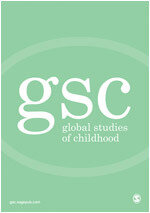A 2019 census of residential care facilities in Guatemala found 3863 children in residential care and that 97% of these children had at least one living relative. The census clearly indicates that children in the facilities are not orphans and the possibility of reunification, if appropriate processes and services are in place to support the child and parent/caregiver before, during, and after reunification, is possible. The authors played a key role in designing a case management process to support the reunification of children from residential care back into families with the end goal being successful reintegration.
A series of wellbeing domains were designed to help understand and measure what successful reintegration would include within the case management system. Informed by a case review of 36 Guatemalan children supported to reintegrate into families, and interviews with social workers and psychologists engaged in the process, this article explores the role of the “community connectedness” wellbeing domain. The authors explore how community connectedness or lack thereof, can contribute to child and parent/caregiver wellbeing and successful reintegration—the different types of community connectedness and who/what was involved in establishing and fostering these connections.
With growing interest in reintegration efforts globally, efforts to better understand the unique role that community connectedness has in overall family wellbeing is well timed. Whilst the topic has been explored in post conflict settings with children and youth previously engaged in armed conflict, experiences of reintegration from residential care facilities in non-emergency contexts is limited, including in Spanish speaking contexts.
Webinar Recordings:
Related:
- Factors Associated with the Family Reintegration Stability for Children with a Residential Care Experience in Ghana
- The Role of Resilience Processes in Education and Well-Being Outcomes for Separated Children in Uganda: Exploring Street-Connected Children’s Pathways Through a Resilience-Based Programme and Beyond
- Intersectional Yet Individual Experiences: The Importance of Acknowledging, Conceptualising and Contextualising Separated Childhoods
- Beyond Family: Separation and reunification for young people negotiating transnational relationships
- Residential Homes for Children in Ghana: Compliance with Standards, Quality of Care, and Case Management

